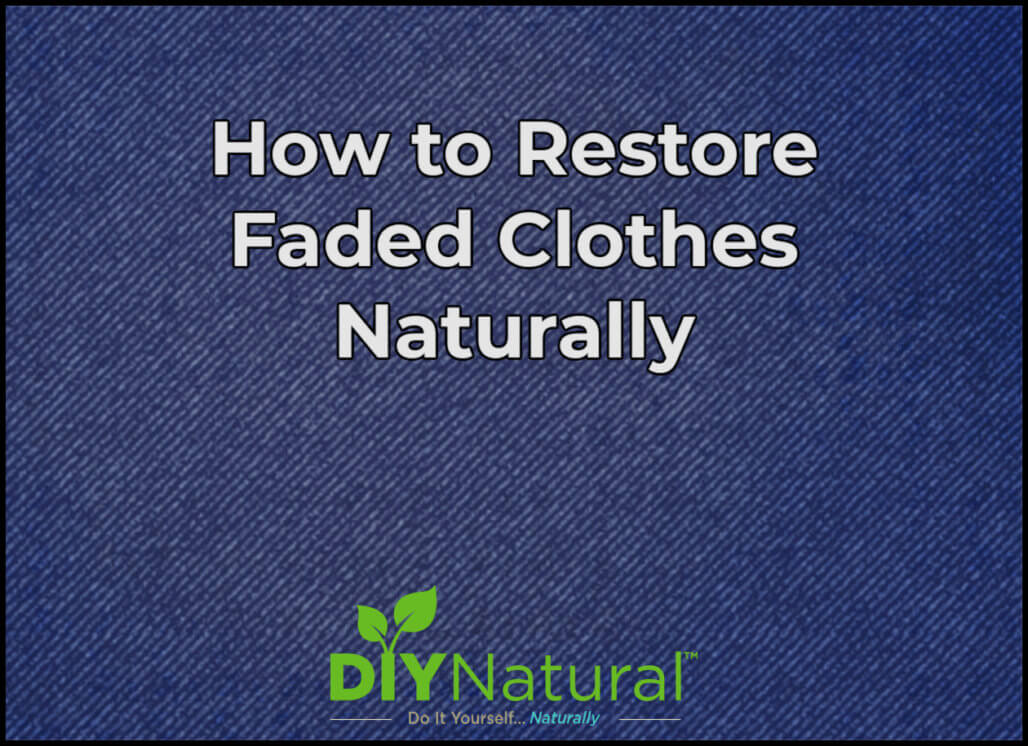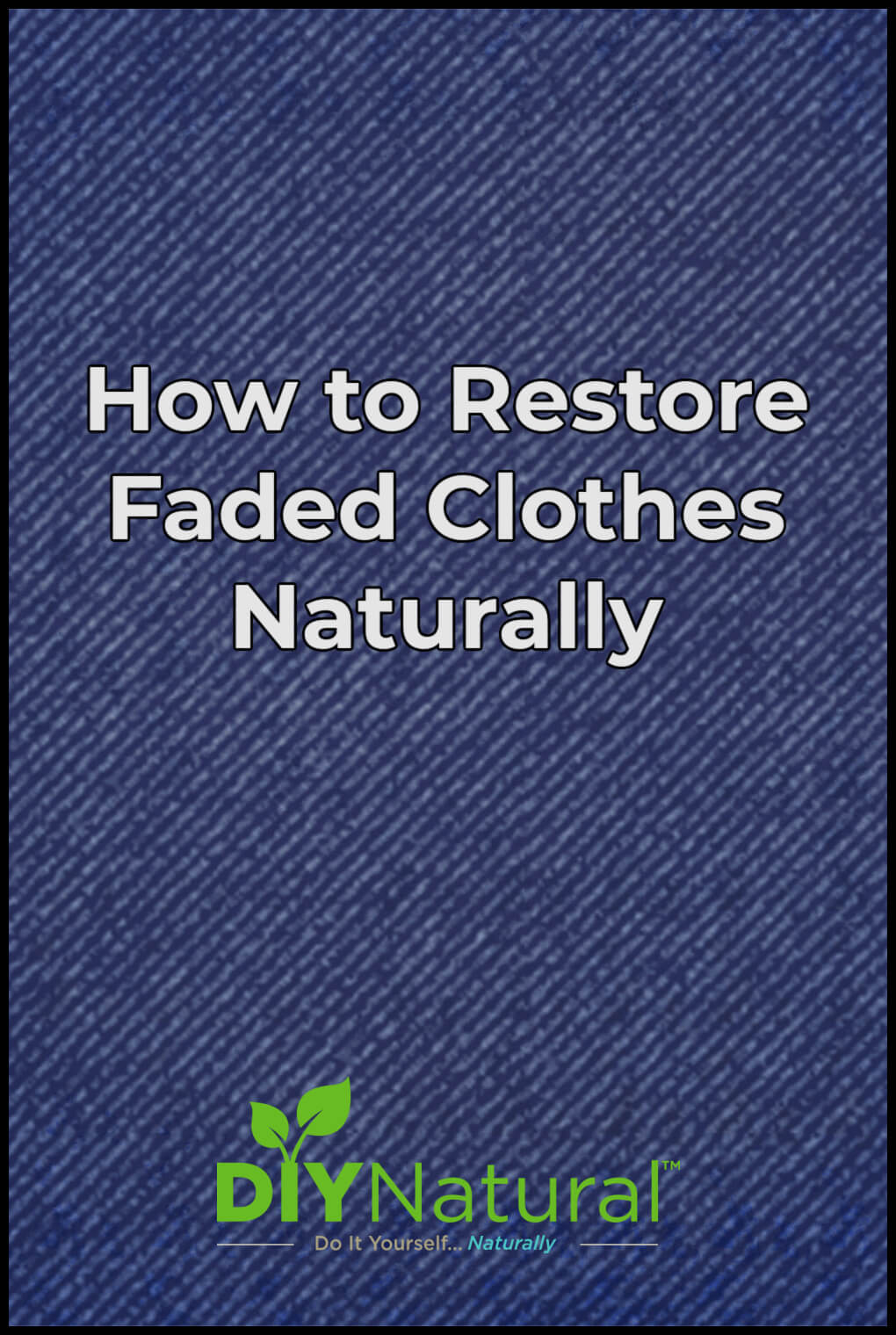
Learn how to restore faded clothes naturally. Don’t throw out clothing that has lost its luster, restore its color simply and naturally.
There are a lot of articles available on how to dye fabric. But what if you have a pair of pants that were black, but now are more of a gray? It’s just one pair and they’re still in great shape, but the color has faded. This method also works for clothing that has a stain on it. You can’t bear to part with it, but you can’t wear it because of the stain. This process works very well for natural fabrics but does not work for synthetics.
How to Restore Faded Clothes
Step 1: Preparing the Clothing
To dye clothes, they need to be clean. Any dirt may not only get in the way of the dye but could potentially change the color of the end product. You may also want to mordant your clothing. This is the process of soaking in some type of solvent that helps to fix the color to the fabric. It can also help to make the color richer or brighter, colorfast, and fade resistant. Using chalk powder can help make your reds redder. Some reds take on an orange hue without it. Citric acid can make clothes more yellow and alum can help bring out brighter colors.
To restore faded clothes I use either salt or vinegar in these amounts:
- Salt: dissolve ½ cup of salt in 8 cups of cold water
- Vinegar: blend 1 part white vinegar with 4 parts cold water
Note: the full instructions on how to mordant fabric can be found here. You’ll also be able to find color ideas in this article.
Mordanting isn’t necessary, but can greatly help the outcome of the dying process.
Step 2: Choose The Proper Color
For this article, I will restore a faded pair of black pants. They’ve faded to gray and really don’t look that good. For these pants, I’m going to use some black walnut hulls and coffee grounds.
- 1/2 cup dried black walnut hulls
- 1/2 cup fresh ground coffee
Place these in a cheesecloth pouch. I double my cheesecloth so that I don’t get coffee grounds in my water bath. You’re then ready for the next step.
Step 3: Dying the Fabric
For the last step in restoring faded clothes, you’ll need a quart jar (a larger jar if you are dying something larger like jeans), your clothing article, distilled water, and the dye packet.
Place the clothing in the jar and add the dye packet. Let it soak for 10 minutes or so to get the colors to start coming out. Add the clothing. Make sure that it is thoroughly wet with no air pockets. This may take some swishing around. Chopsticks are great for this. When you have the fabric wet, cover and tighten the lid on the jar. Shake a few times to evenly distribute the color.
Now, leave the jar in the sun for a few days. Shake it a few times a day to keep the color even. You can leave the clothing in the color bath for a few days to really soak up the color. When you take the clothing out of the jar, remember that the color will lighten a bit as it dries. Hang the fabric to drip a bit, then rinse it in cold water. Let dry naturally.
If the color is what you want, this is where you stop. You can then wash and dry it normally after you wear it. But if the color is too light, then run it through another dye bath. It sometimes takes a few tries to get exactly the color that you want.
You Just Restored Faded Clothes Naturally!
Now you can restore the color on your clothes naturally. No more tossing out good clothing!
*******




Hi Carol L,
I’m so sorry I didn’t get to your question right away. I work full time at a college and last week was the last week of the semester. With exams, graduation and all, I just didn’t get to the questions. Again, I apologize. You are correct. The dye pouch goes in first, then the clothes after the dye has come out in the water. If you put the clothes in too soon, you could get steaks from where the dye has come out in “ribbons:. Some areas may be more diluted by some of the water. And Debra, sorry for the confusing wording.
In answer to your first question, there are other natural colors that can be used for fabric dyes. Avocado peels can yield a dusky pink, purple cabbage can turn fabrics blue, blueberries can go more of a denim blue. Yellow onions can go yellow to brown and tea is used for a nice brown color. For other ideas, you can look at my fabric dying article here at DIY Natural. Hope this helps, Debra
You told us how to “restore” BLACK clothing, with NATURAL dye. What about other colors??? How about other natural herbs, plants, barks, etc. for other colors???
Red, yellow, orange, blue dark and light, green, etc??
PLEASE MONITOR YOUR POSTS AND ANSWER QUESTIONS!!!
Was this a mistake or am I misunderstanding?
“Place the clothing in the jar and add the dye packet. Let it soak for 10 minutes or so to get the colors to start coming out. Add the clothing.”
I think she meant to place the dye POUCH in the jar, swish and let it settle to get the colors to come out THEN add the wet clothing …the written direction ARE confusing.